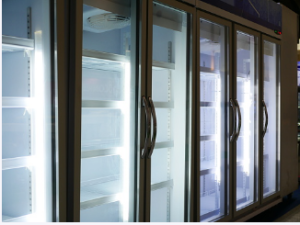Industrial refrigeration involves the production of heat and coolness from a source. A few industrial refrigeration types are available for you to consider, including waste heat recovery, district cooling, and Lithium bromide-water absorption chillers. In addition, several types of compressors are available, including those that utilise ammonia or HFC/HFO blends.
 Ammonia
Ammonia
Ammonia has been used in Cold_Logic industrial refrigeration Adelaide systems for over a century. Its thermodynamic properties make it the ideal refrigerant for refrigeration applications.
However, ammonia also presents some significant safety challenges. These include toxicity and flammability. As such, it is essential to consider these concerns and the material compatibility of ammonia with other materials.
There are several guidelines that businesses can follow to ensure their employees’ safety. Some of these are available through OSHA. They include a list of standards and an Emergency Preparedness Checklist.
In addition to using these measures, workers must be provided with the appropriate personal protective equipment. It includes eyewear, gloves and respirators.
Another method to keep workers safe is through preemptive maintenance. By implementing preventative measures, ammonia leaks can be avoided. However, even with these measures, accidents can still occur.
A self-assessment tool is available to help employers evaluate their workplace’s potential for ammonia hazards. The device is designed as a fillable template and is helpful to employers who maintain or operate industrial refrigeration systems.
While ammonia’s thermodynamic properties and low price make it an ideal refrigerant, it still has challenges. Because of its flammability, toxicity and corrosive properties, it’s essential to follow proper safety procedures.
Lithium bromide-water absorption chillers
Lithium bromide-water absorption chillers have several applications in industrial refrigeration. They are especially suitable for space cooling, though they can also be used for process cooling. Unfortunately, these chillers have limited capacity for refrigeration below 4°F.
There are two types of units: one-stage and two-stage. The latter is designed for larger cooling loads, while the former is used for space cooling.
The first step in the absorption chiller operation is to circulate the lithium bromide solution through the piping. It is done through the use of pumps. Bromide is kept in solution because it has the property to absorb water.
However, the capacity of the solution is directly proportional to its concentration. Thus, the brine loses its absorption capacity when the lithium bromide concentration is reduced. Conversely, the lithium bromide brine regains its ability to absorb water when the concentration increases.
Since lithium bromide is corrosive, keeping the solution as pure as possible is essential. In addition, the temperature of the absorption cycle should be as constant as possible. A continuous temperature reduces thermodynamic irreversibilities.
LiBr-H2O was introduced into the market in the 1980s as an efficient thermal energy source. As a result, it became widely used in air conditioning systems.
HFC/HFO blends
HFC/HFO blends are refrigerants composed of hydrofluorocarbons and fluorine. These blends offer the advantages of a safe refrigerant without the risks of high GWPs.
These blends can be used to replace the most common HFCs. However, not all equipment is compatible. Therefore, it is best to consult your equipment manufacturer before transitioning to a new blend.
There are several different kinds of HFC/HFO blends. Several gas manufacturers have produced such mixtures.
Many are known for their thermal stability and compatibility with various materials. They are also considered safer than the more flammable CFCs. In addition, the best HFO/HFC blends offer the lowest emissions. Multiple studies have evaluated the performance of HFO/HFC combines in existing refrigeration systems.
Compressors
Cold_Logic industrial refrigeration Adelaide compressors are a fundamental part of an industrial refrigeration system. They are used for quick-freezing equipment as well as cold storage. However, this type of compressor is less efficient than piston or reciprocating compressors.
Fortunately, innovations are being developed to meet the demands of diverse customers. These unique designs are aimed at reducing energy consumption. One such innovation is the use of variable-speed drives. This feature enables the compressor to operate faster when the suction pressure rises. In turn, this increases the theoretical cooling capacity. As a result, the efficiency of these systems is significantly improved.
One of the significant advantages of this type of compressor is the reduced vibration. In addition, these systems have an oil separator and oil injection control. Furthermore, there are fewer moving parts, which reduces the energy cost.
Another essential benefit of this type of Cold_Logic industrial refrigeration Adelaide system is the ability to adjust the frequency based on the suction pressure. It is accomplished through an integrated PID function.
Another valuable component of this system is the ability to increase the volumetric compression ratio of the compressor. The variation in suction pressure is measured to determine the volumetric compression ratio.
District cooling
District cooling for industrial refrigeration is a cost-effective, energy-efficient and environmentally friendly method of air conditioning buildings. Its advantages include reduced energy use, fuel costs and emissions. The system can also reduce harmful chemicals in the environment.
A district cooling system comprises a pump house and a central chiller plant. It produces chilled water and feeds it into the cooling systems of different inhabited areas, and this is done through underground piping and insulated distribution piping.
This district cooling process reduces the capital costs of the system. It also reduces operating and maintenance costs. Using a district cooling system helps build economies of scale. In addition, this technology is efficient and reliable.